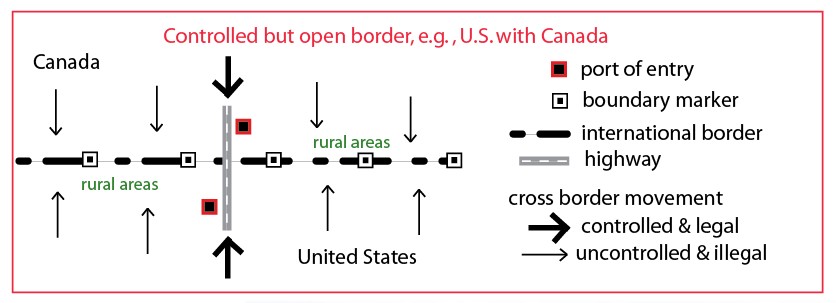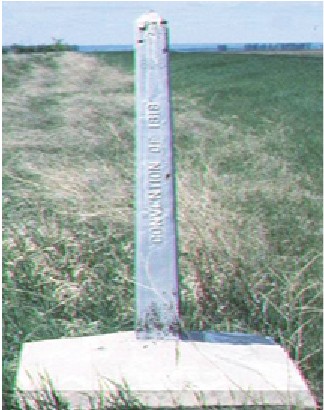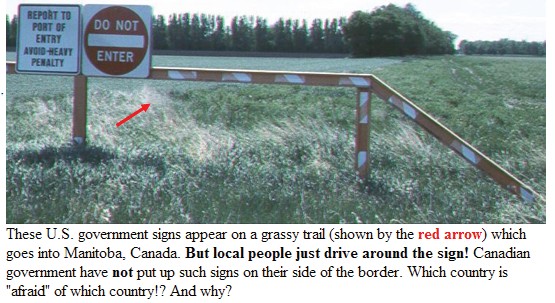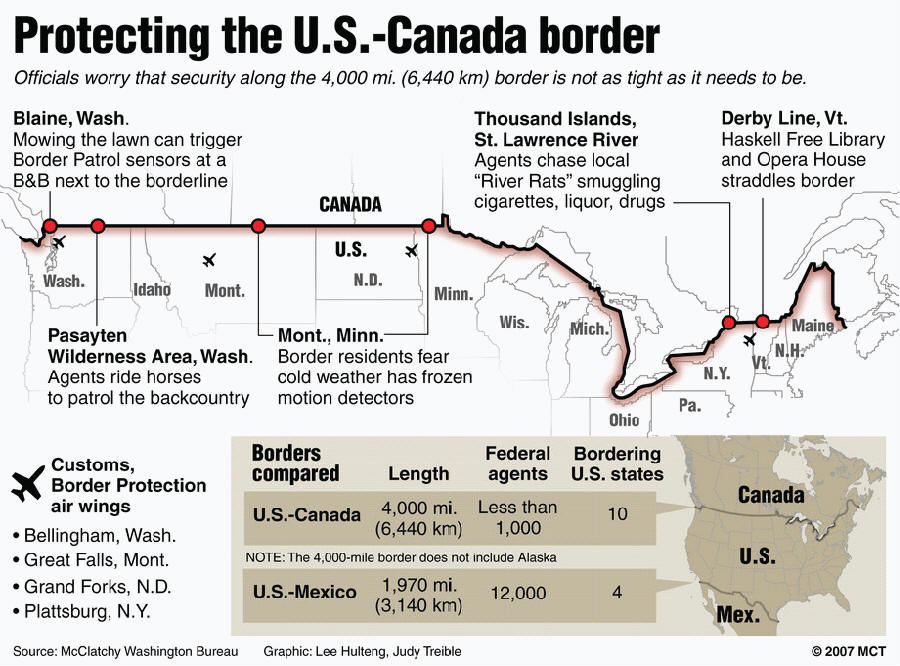Ingolf Vogeler, Types of
International Borders
along the U.S.-Mexico Border
The most common form of borders today are controlled ones. Only at
border
crossing points are people and goods checked for national immigration
and custom rules.
Passports, and sometimes
visas, are required, but for most of the
length of controlled borders no material barriers, such as wire fences, and therefore no
border crossing controls are
in effect. In other words, except for heavy trucks, people and goods
can easily move across most of the length of these borders, albeit illegally!
The U.S.-Canada international border
is illustrative of
controlled borders:

 Periodic
case-iron markers, as shown in this photo, are the only visible forms of
delineating the border between Canada and the United States, which was
confirmed by the
Convention of 1818 and the Treaty of 1908 -- text
of each appears on either side of the markers.
Periodic
case-iron markers, as shown in this photo, are the only visible forms of
delineating the border between Canada and the United States, which was
confirmed by the
Convention of 1818 and the Treaty of 1908 -- text
of each appears on either side of the markers.

The
Western Hemisphere Travel Initiative (WHTI) was mandated by Congress in the Intelligence Reform and Terrorism Prevention Act of 2004 to strengthen border security and facilitate entry into the United States for citizens and legitimate international visitors, including from Canada and Mexico. WHTI requirements for air travel took effect on 23 January 2007. Effective 1 June 2009, U. S. Customs and Border Protection (CBP) officials required all travelers, including citizens of both Canada and the United States, to present valid passports or passport cards, when entering the U.S. through land and sea borders.
Passports
In the later part of the nineteenth century and up to World War I, passports were not required, on the whole, for travel within Europe, and crossing a border was straightforward. During the 1920s the League of Nations developed guidelines and standardized design of passports. The United Nations held a travel conference in 1963, but passport guidelines did not result from it. Internationally passport standardization came about only in 1980, under the auspices of the International Civil Aviation Organization (ICAO).
Based on the Schengen Agreement, which was passed by the European Union (EU) in 1985, 25 countries in Europe, mostly EU members but also non-members, such as Switzerland, lifted requirements for passports. Meanwhile, the United States began requiring passports, for the first time, from Canada and Mexico as of 1 June 2009.
Visas
While all countries outside of Europe require at least passports, many other countries, particularly those in Asia and Africa, also require visas, which add another barrier to international border crossings. For example, U.S. passport holders require tourist visas for 86 countries and territories but not from 109 (Source: http://www.travisa.com/travelvisa.htm, accessed 5 September 2010). The number of visas issued by countries each year is a major form of border control: the U.S. government alone issued 5.8 million visas to non-immigrants in 2009, down from 6.6 million in 2007 (Source: http://travel.state.gov/visa/statistics/graphs/graphs_4399.html, accessed 5 September 2010).